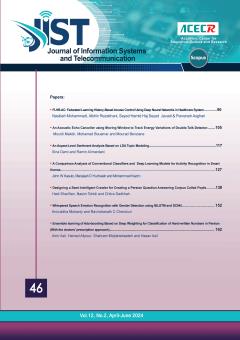Wireless sensor networks consist of many fixed or mobile, non-rechargeable, low-cost, and low-consumption nodes. Energy consumption is one of the most important challenges due to the non-rechargeability or high cost of sensor nodes. Hence, it is of great importance to a
More
Wireless sensor networks consist of many fixed or mobile, non-rechargeable, low-cost, and low-consumption nodes. Energy consumption is one of the most important challenges due to the non-rechargeability or high cost of sensor nodes. Hence, it is of great importance to apply some methods to reduce the energy consumption of sensors. The use of clustering-based routing is a method that reduces the energy consumption of sensors. In the present article, the Self-Adaptive Multi-objective TLBO (SAMTLBO) algorithm is applied to select the optimal cluster headers. After this process, the sensors become the closest components to cluster headers and send the data to their cluster headers. Cluster headers receive, aggregate, and send data to the sink in multiple steps using the TLBO-TS hybrid algorithm that reduces the energy consumption of the cluster heads when sending data to the sink and, ultimately, an increase in the wireless sensor network’s lifetime. The simulation results indicate that our proposed protocol (OCRP) show better performance by 35%, 17%, and 12% compared to ALSPR, CRPD, and COARP algorithms, respectively. Conclusion: Due to the limited energy of sensors, the use of meta-heuristic methods in clustering and routing improves network performance and increases the wireless sensor network's lifetime.
Manuscript profile


